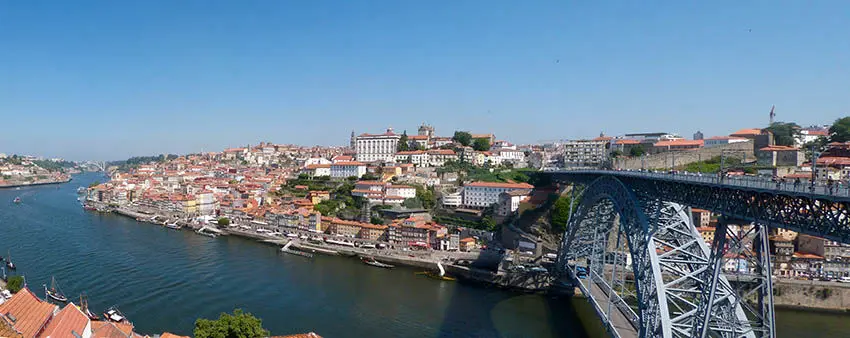
1. INTRODUCTION
Welcome to Porto, a city of great importance in the history of Portugal, since it was she who gave her name to this beautiful country. When you visit Porto, you will discover an authentic city with a unique atmosphere. Its colorful and decadent facades, its bridges, its famous wine, its gastronomy and its welcoming people, fascinate and attract many visitors.
With almost 300,000 inhabitants, it is the second most populated city in Portugal after Lisbon. Porto is located in the northwest of the country, at the mouth of the Douro River.
Its origins date back to a small Celtic village, to which the Romans added a port, called "Portus Cale," which gave rise to the name Portucale. Thanks to its maritime and commercial activity, the city has been very important throughout history.
In 1996, UNESCO declared the historic center of Porto a World Heritage Site, which gives you a hint of how valuable its heritage is. Are you ready to tour the city with our audio guide?
Start the tour!
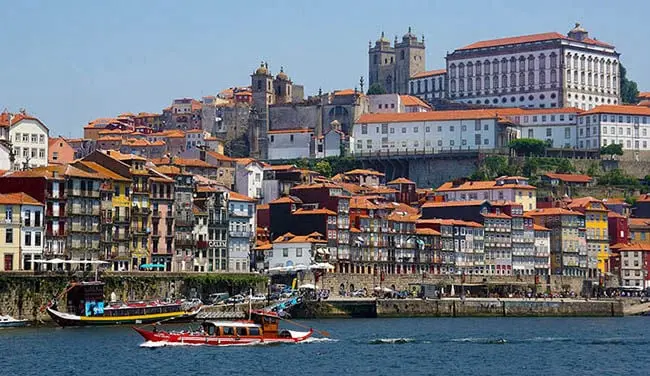
2. THE CLÉRIGOS TOWER AND CHURCH
We begin our audio guide of Porto with one of the most emblematic monuments of the city: an architectural ensemble of baroque inspiration, built in the 18th century. It is composed of the church, the tower and, connecting the two, Brotherhood House.
The Clergy Brotherhood commissioned the Italian architect Nicolau Nasoni to construct the building. It began in 1754 and was completed in 1763. Nasoni managed to take advantage of the unevenness of the terrain with great ingenuity and create a very unique complex.
Clérigos Tower is 75 meters high, and was for many years the tallest building in Portugal. If you manage to conquer its 225 steps, you will be able to enjoy incredible views of the city of Porto. During the ascent, watch for the 49 bells on the tower. Its height and its location in a high place make it a good point of reference to locate yourself in the city. In fact, the sailors who sailed on the Douro River used it as a reference in their voyages.
The church has an ellipse-shaped floor plan. Another very unique feature of this monument is its gallery, which surrounds the entire nave and lets you see the entire church.
Brotherhood House is open to the public as a museum and offers a tour of the private spaces that were once used for the daily life of the Clergy Brotherhood.
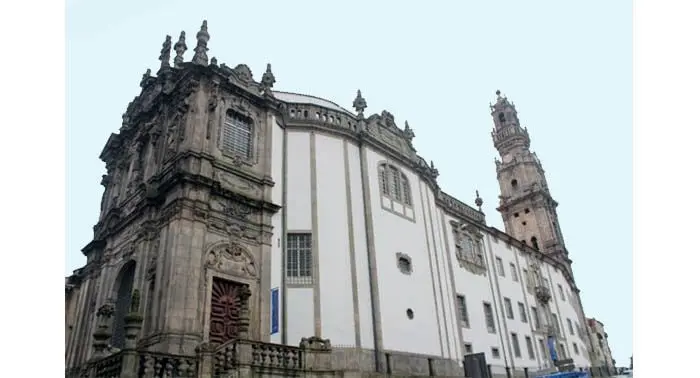
3. RIBEIRA
How about taking a walk with the audio guide along the banks of the Douro River, between Luis I Bridge and Arrábida Bridge?
Ribeira is one of the most emblematic and picturesque places in the city. Its narrow streets and old buildings give it a bohemian and somewhat decadent look that has a lot of charm. Ribeira preserves a medieval atmosphere that can be appreciated in each of its buildings and alleys. On the banks of the river, there are some narrow and colorful houses, some of them decorated with typical striking tiles. Some traditional wooden boats are moored in the river, called rabelos, which were formerly used to transport wine.
The narrow cobbled streets of Ribeira are dotted with small bars and restaurants serving classic Portuguese dishes, such as grilled sardines, or a good cod. Many cafés are hidden inside the medieval arches, and in summer they spread their patios on the Cais da Ribeira Street, which runs along the shore. It is a very lively area to go out at night to enjoy the views and night atmosphere.
Next to the Douro River, Praça da Ribeira is surrounded by colorful 18th century houses.
From Luis I bridge, which has two levels, there is a magnificent view and you can access Vila Nova de Gaia.
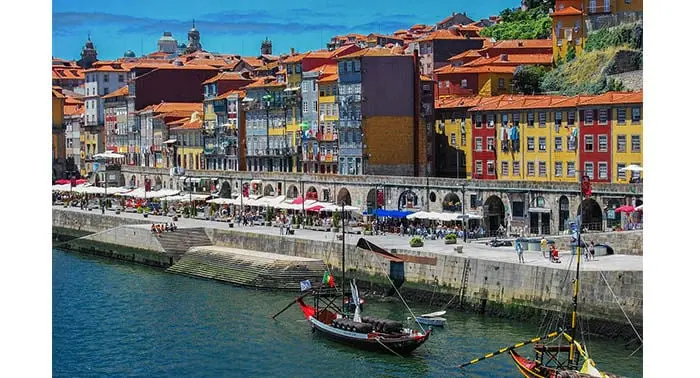
4. PORTO CATHEDRAL (SÉ)
After walking along the Ribeira, we now suggest taking the Funicular dos Guindais to go up to the Sé of Porto. Located in the upper part of the city, in the Batalha district, this place is one of the best viewpoints in the city. On one side you can see the river and its banks, and on the other side, the old part of Porto with its old buildings and colorful facades.
The Sé, or Porto Cathedral, is one of the oldest and most important buildings in the city. Thanks to the explanations in this audio guide, you will understand why it features such an eclectic architecture.
The origin of the cathedral dates back to the 12th century, so it displays a Romanesque style; its sober exterior appearance and the rose window on the façade are good examples of this. The interior, with its barrel vault and its austere and poorly decorated appearance, also reminds us by its simplicity that this cathedral was born Romanesque.
But construction of the cathedral lasted until the 13th century, so some Gothic elements were incorporated into the whole, such as the cloister or the funeral chapel of João Gordo, which are in the Gothic style.
This mixture of aesthetic trends does not end there; the exterior of the cathedral underwent several modifications in the Baroque era, so many elements are typical of the Baroque style. Around 1772, a new doorway was built to replace the original Romanesque one. Other examples are the domes of the towers or the high altar. Around 1736, the Italian architect, Nicolau Nasoni, added a beautiful baroque narthex to the cathedral's side façade.
Let's continue the tour with the audio guide to access the 14th-century Gothic cloister. It is well worth your visit. It is decorated with white and blue tiles representing scenes from the life of the Virgin and the Metamorphoses of Ovid. The access to the upper floor is made via a staircase also designed by Nasoni, and it lets you visit different rooms: among them, the Casa do Cabildo stands out, where the Treasure of the cathedral is exhibited, a good sample of sculpture, gold-work, books, and other liturgical objects.
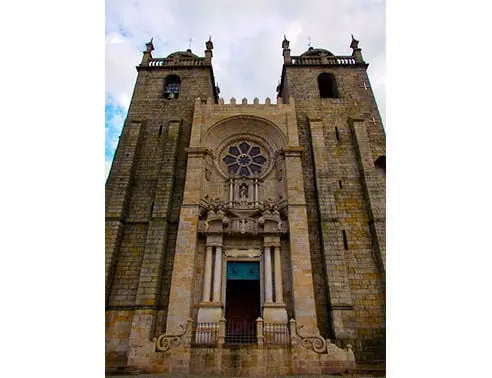
5. BOLHAO MARKET
Entering the Bolhao Market with the audio guide is like going back in time: it seems that time has been standing still in there.
Noisy and colorful, somewhat decadent but still charming, the Bolhao Market is one of the most emblematic places in Porto. Inside, it hosts all kinds of stalls with a great variety of products.
It consists of two floors, with a large inner courtyard. There are even some tables set up where you can have an aperitif or a meal. You can access the interior through one of its four entrances.
The history of this place goes back to 1839 when the decision was made to build a square on a huge mudflat. This, crossed by a stream, formed a large water pool, “bolha de agua” in Portuguese, which later gave its name to the market. Over the years, the square was transformed into a market, until its size became insufficient. The initial project to build the new market was abandoned for economic reasons and it was in 1914 when the current two-story neoclassical building was erected. By that time, the building turned out to be an innovative structure, combining reinforced concrete with metal structures, granite masonry, and wooden roofs.
Today, it is in a rather deteriorated state and awaiting restoration.
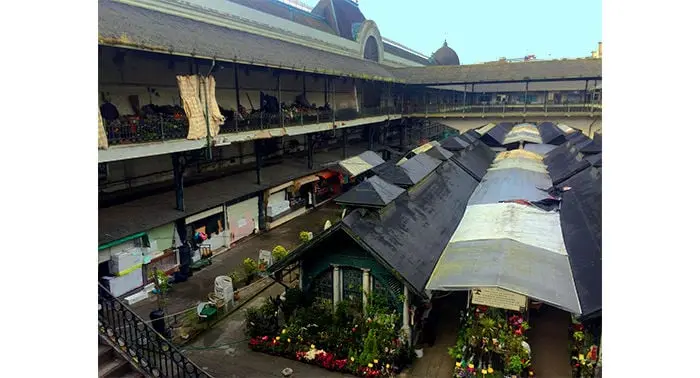
6. VILA NOVA DE GAIA
Although it seems to be part of Porto, Vila Nova de Gaia is, in reality, a different city. To reach it, you just need to cross the Luis I bridge, as it is located on the other side of the Douro River. With the audio guide, you can walk along the banks of the Douro, walk through its narrow streets and stairs, and of course, visit some of the famous wineries where wine is produced with the Porto origin designation.
Luis I Bridge, inaugurated in 1886, is one of the symbols of the city. This metal bridge with a large iron arch was designed by Théophile Seyrig, partner of the famous engineer, Gustave Eiffel. It is made up of two floors, with the subway passing through the upper one and cars passing through the lower one. The bridge can be crossed on foot from both floors.
Once there, you will find about 50 wineries, among which we can mention in this audio guide names like Calem, Sandeman, Taylor's, Real Companhia Velha or Cockburn's Port Lodge. All of them offer us a detailed visit that allows us to discover the production process. The tour ends with a wine tasting.
One of the most typical prints of the banks of the Douro are the "rabelos," colorful wooden boats that were once used to transport the wine barrels, and that today offer tours for tourists.
Another way to discover the area is to take the Gaia cable car. It let you cover the difference in elevation from the banks of the Douro to the top of the Luis I bridge, and you can also appreciate Porto from another perspective. The tour includes a glass of wine, and the cable car leaves you at a viewpoint that offers great views.
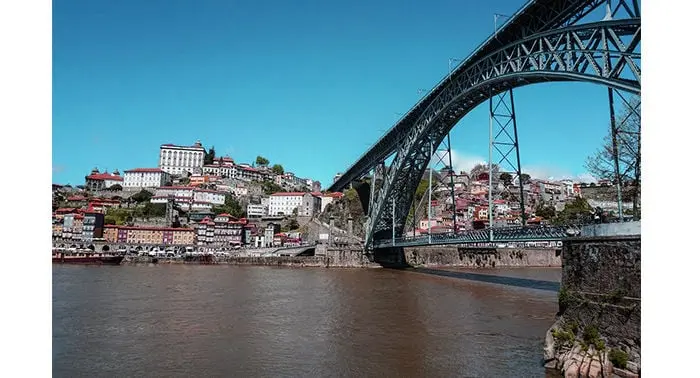
7. PORT WINE
Paradoxically, port wine is neither grown nor produced in Porto, but in the Alto Douro; from there it is transported for maceration to the cellars that are located right in front of the city, in Vila Nova de Gaia, on the other side of the Ribeira. But it is from Porto that it is exported to the rest of the world, thanks to the city's privileged position at the very mouth of the river, which historically facilitated exports to England.
The Alto Douro region, located about 100km from Porto, has always produced wines, although they were not consumed outside Portuguese territory. In 1678, war broke out between France and England, so wine exports from France ceased. Faced with this situation, the English set their eyes on their Portuguese ally to quench their thirst and Douro Valley wine began to be consumed throughout Great Britain.
The British then established several wineries in Portugal, enjoying a monopoly on production until the 18th century, when the Portuguese also entered the business by founding Companhia Velha.
The vineyards are located on very steep terraces, whose impressive geography does not allow for the industrialization of cultivation. Harvesting has been carried out by hand for over two thousand years. Because of this great cultural value, the area of the Alto Douro is protected by Unesco.
Once the grapes are picked, they are taken to the cellars located in Vila Nova de Gaia. There, shortly after fermentation begins, the grape juice is mixed with eau-de-vie. This stops the fermentation of the sugar in the fruit, so it remains a sweet wine. These types of wines are known as fortified wines, and as such, they have a high alcohol content of between 19 and 22 percent.
There are several types of Port wine: among the Red Port wines, the Ruby is aged in huge barrels for 8 to 10 years; the Tawny is aged in smaller barrels, and this high contact with the wood allows it to acquire another color and other nuances. White Port is fermented in barrels larger than 20 thousand liters, and is classified by its sweetness.

8. SERRA DO PILAR MONASTERY
Located in Vila Nova de Gaia, on the other side of the Douro River, the next stop for the audio guide is the Serra do Pilar Monastery. It offers a magnificent view of the oldest part of the city and the river. It preserves the church and the cloister built in 1538, classified as a National Monument. This monastery is unique in all of Portugal because both the church and the cloister have a circular floor plan, the most typical model of civil architecture.
The church is a replica of the church of Santa Maria Redonda in Rome, and is covered by a hemispherical vault, surrounded by a small balcony. Its construction lasted 72 years, due to the lack of resources and the political situation at the time: the kingdom of Portugal was then occupied by neighbouring Spain, so this monument took the name of a Spanish saint, Our Lady of the Pillar.
In 1832, during the Siege of Porto, the convent was transformed into an improvised fortress and used as a military base. The convent, which no longer exists, belonged to the clerical regents of Santo Agostinho, who settled there in the 16th century. At the beginning of the 20th century, it became the troop headquarters and is currently under the authority of the Serra do Pilar Artillery Regiment.
Inside the church are some gilded altarpieces with Solomonic columns and polychrome wood sculptures from the 18th century representing Saint Eulalia, Saint Apollonia and Saint Augustine. The circular cloister has 36 Ionic columns.
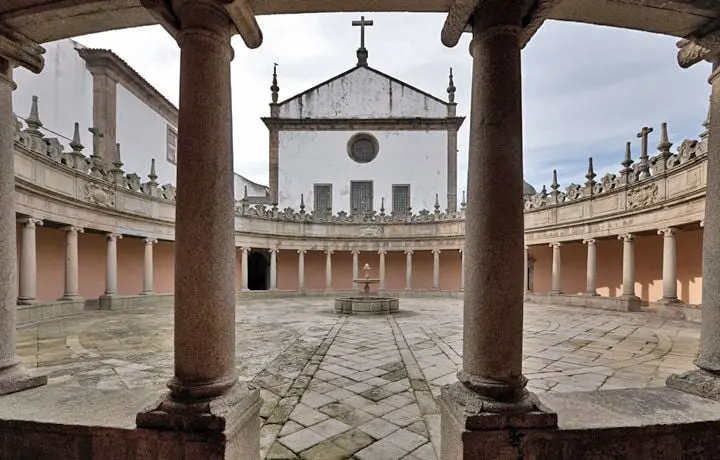
9. RUA SANTA CATARINA
Santa Catarina's pedestrian street is the commercial street par excellence in the center of Porto. Walking along it with the audio guide from Praça do Marquês de Pombal lets us discover one of the busiest streets. During the tour, besides restaurants, shops and a shopping center, you will pass in front of some churches and near Bolhao Market.
In fact, in this street you will find one of the most beautiful churches in Porto, the Chapel of Souls. The most striking thing is its façade, covered by 16,000 white and blue tiles, which recount the lives of Saint Catherine and Saint Francis of Assisi, the Saints to whom this church is dedicated.
Another stop recommended by the audio guide is located at number 112 of Rua de Santa Catarina. It is the Majestic café, one of those places that are not missing in any Porto guide, a special corner where you can contemplate the sumptuous décor and delight in its marbles, sculptures, and fine woods. The establishment opened its doors in 1921, becoming a much-appreciated gathering place where personalities from the city's cultural and artistic life frequently visited. Its façade and walls are dominated by the language of Art Nouveau, which takes us back to the 1920s and the Belle Époque; it was not for nothing that it was considered in 2011 to be the sixth most beautiful café in the world, despite its large capacity and high prices!
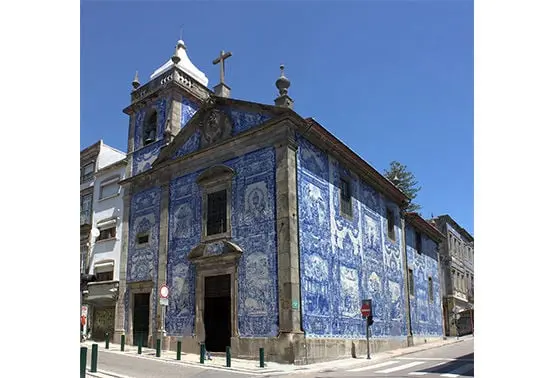
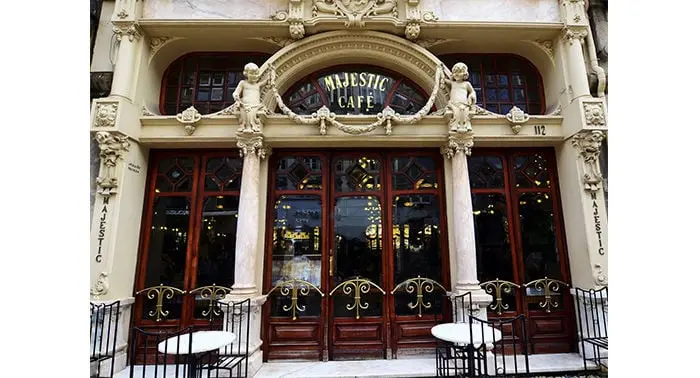
10. BARREDO QUARTER
For those who want to taste the true essence of Porto, it is essential to visit Barredo Quarter. Between the busy Cais da Ribeira and the Cathedral, lies this old medieval quarter which while very deteriorated is the heart of the city.
A labyrinth of narrow, worn-out streets, steps and alleys leads the passer-by on a continuous ascent to the top of Monte de la Sé, where the majestic silhouette of the Cathedral stands. As we climb the Escadas do Barredo, or the Escadas das Verdades, we will discover charming nooks around every corner.
Among the houses that seem to be on the verge of falling down, we can perceive a certain feeling of loneliness and nostalgia; however, the intense ochre color of the facades, the washing hung out to dry and the greenness of the plants that decorate the balconies add a note of color and life that invites us to wander through the narrow streets in search of authentic nooks that don't appear in the tourist guides.
One of the most representative monuments of the area is the " Barredo Tower," located in Largo da Vandoma; its construction dates back to the 12th century and is the oldest example of medieval civil architecture in the city. You can also go and have a look at the curious Ribeira Negra Painel located in Praça Dom João I, and Casa do Beco dos Redemoinhos en el Largo Professor Abel Salazar.
Get lost in these streets and let yourself be carried away by your impulses, with no fixed destination, and don't hesitate to have a beer, a soft drink or a glass of wine in one of the little places that can be found in the area, and why not start a conversation with the people, and thus discover the true flavor of Porto.
.
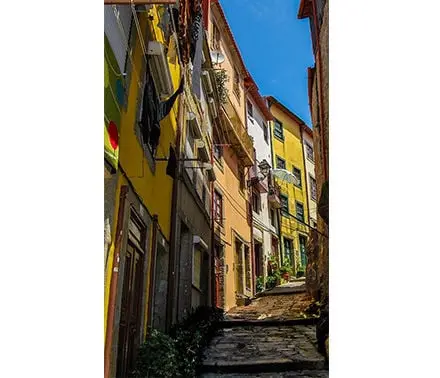
11. THE CHURCH OF SAINT FRANCIS
Perhaps the exterior of this church will not attract much attention, beyond its size and its curious facade. Built of granite by the Franciscans at the beginning of the 14th century, you can see Romanesque and Gothic elements in its architecture. However, its front and interior are in the Baroque style. It is when you enter that you will notice the treasure hidden inside. Its ceilings and walls are completely covered with gold, which gives this church a very ostentatious air. This golden coating of chapels, vaulting columns and other details was made in the eighteenth century and is considered one of the best examples of European Baroque.
Apart from its golden coating, another remarkable element of the Church of Saint Francis is the tree of Jesse, a polychrome wood sculpture that can be found in the side chapel of Our Lady of the Conception. It was made between 1718 and 1721 by the master craftsmen, Filipe da Silva and António Gomes, and represents the genealogy of Jesus Christ.
And if you don't think it's enough and want more surprises, go to the catacombs under the church; many Franciscan monks and noble families of the city are buried here. The most chilling thing about the catacombs, however, is the ossuary with hundreds of human bones that can be seen behind a window on the floor. They predate 1866, the date when burials in churches were prohibited for public health reasons.
To finish the visit with the audio guide, the Museum of St. Francis offers an exhibition of sacred art and liturgical objects, in a building built by Nicolau Nasoni, the same architect who created the Clérigos Tower.
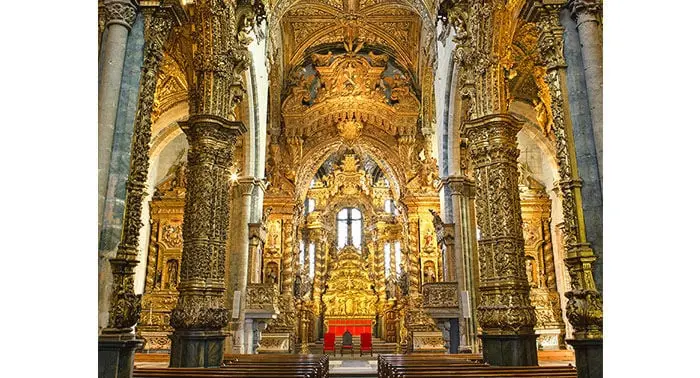
12. PALÁCIO DA BOLSA
At the end of the visit to the Church of Saint Francis, the audio guide now suggests a tour of the Palácio da Bolsa, located right next door. Built between 1842 and 1891, this impressive and enormous stone building in neoclassical style hides finely decorated rooms. Originally the headquarters of the Porto Trade Association, it is now the headquarters of the city's Chamber of Commerce and Industry.
As soon as you enter, you'll discover a large central courtyard, called the Courtyard of Nations, covered by a glass structure that lets in a lot of natural light. At the top, see the coats of arms of the 27 nations with which the Porto Trade Association had trade relations in the 19th century.
A beautiful granite and marble staircase leads up to spectacular rooms, such as the Court of the Old Trade Court, decorated with large historical paintings; the General Assembly Hall, covered in wood; the Golden Hall, decorated with gold leaf; and the Hall of Portraits, which houses paintings of the last kings of Portugal, such as Pedro IV and Manuel II.
But without a doubt the most impressive is the Arabian Room, with its 300 square meters. In Moorish style, inspired by the Alhambra in Granada, it is where official receptions are held. Also worthy of special attention are the Presidential Hall, with portraits of the presidents of the Trade Association, and the Library, with more than 10,000 volumes on its shelves.
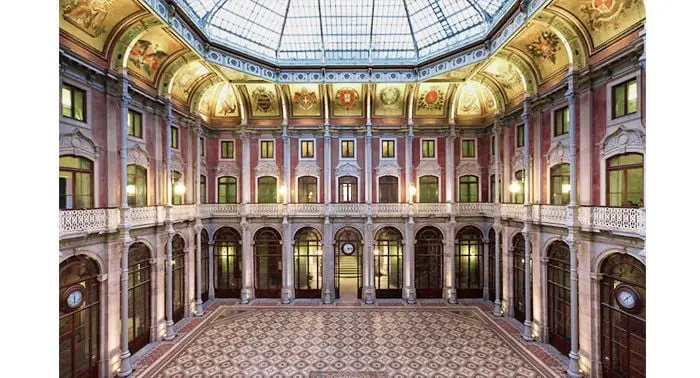
13. THE CARMELITE CHURCH AND THE CARMO CHURCH
Following your route through the center of Porto, stop for a moment with the audio guide to visit these two churches located next to each other. A very curious detail is that they are separated by a strange dwelling, which can boast of being one of the narrowest in all of Portugal!
If you stand facing the two monuments, you will see the church of the Carmelites on the left, so called because it belonged to the Order of the Barefoot Carmelites. This 17th century church stands out for its bell tower covered with blue tiles, so typical of Porto. At the top, the figures of Saint Teresa, Saint Dominic, and Our Lady of Mount Carmel guard the three arches that provide entry. Inside, you will discover six chapels with golden tones and a very beautiful altar.
To your right is the church of Carmo, whose Rococo style differs greatly from that of its neighbor, indicating that it was built later, at the end of the 18th century. Its granite façade is made up of two floors and a pediment, where the figures of the evangelists stand. The statues of Saint Elias and Saint Elisa flank the entrance. This church amazes above all due to its large tile mural located on the side facade. Made in 1912, and designed in blue and white, it represents the Imposition of the Scapular on Mount Carmel. The interior of the church exhibits beautiful gilded rococo style altarpieces, as well as an interesting collection of paintings. The high altar and the vault also deserve to be mentioned in this audio guide.
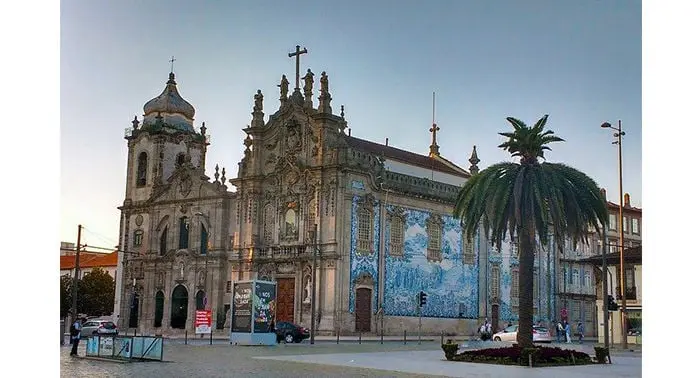
14. CULTURAL PORTO
If your legs are still strong and you want to see more, Porto still has a lot to offer the tireless traveler.
Literature lovers and Harry Potter fans will have a pleasant time at Librería Lello e Irmao, at Rua das Carmelitas number 144. The writer, J.K. Rowling, was inspired by its setting for her famous saga. The interior is well worth a visit, with its imposing staircase and its large, 30-square-meter stained glass window, placed in the ceiling to let in the light. It's not surprising that it is considered by many the most beautiful bookstore in the world, and the 3,000 visitors it receives every day corroborate this.
Another very interesting place is the Portuguese Photography Center. It is located in the former Porto prison, and to tour the building is an overwhelming experience, since the exhibitions are interspersed with cells and former prisoner detention rooms. This museum holds a large part of the country's photographic heritage, from old snapshots organized by theme, to cameras with more than 100 years of history.
Art is present in places you wouldn’t expect, including... the train station! The interior of São Bento station looks like a museum, thanks to its 20,000 tiles that tell the story of Portugal. Located near the great Allied Avenue, in the heart of the city, it was inaugurated in 1916. The building is the creation of the architect, José Marquez da Silva, while the tiles are the work of the artist, Jorge Colaço.
Another of this audio guide's suggestions is the Casa da Música, a cultural center where events and concerts are hosted. The building was designed by Dutch architect, Rem Koolhaas, and although it was scheduled to open in 2001, coinciding with Porto's year as European Capital of Culture, it opened in 2005. The building stands out not only for its inverted shape and curious façade, but also for the versatility and adaptability of its interior space, which is suitable for a wide range of uses. The upper floor is occupied by a restaurant that offers good views of the city of Porto.
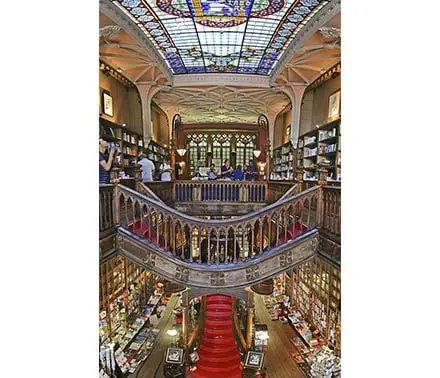
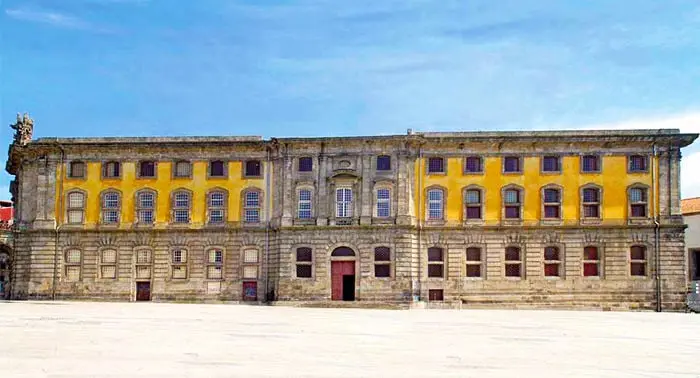
15. EXCEPTIONAL NATURE SPOTS
If, after so much asphalt, you feel like a break and a bit of greenery, a walk around the gardens of the Palácio de Cristal is a good option. Among aromatic and medicinal plants, rose gardens and trees, it is another way to enjoy the views of the Douro river mouth.
You can also visit the Parque da Cidade, the largest park in Portugal, at 83 hectares. It is a highly recommended visit if you are traveling with children; they can carry out scientific experiments in the Pavilhão da Água, such as composing music, observing optical illusions, learning how a tornado is formed, how waves behave and much more, all employing water. And then, facing the sea at the end of the park, you can enter the Porto Sea Life Aquarium, which participates in several marine species protection and conservation programs. The underwater tunnel allows you to feel enveloped by the sea, and behind the manta ray pool, there is a secret tunnel that children love!
Finally, there is nothing like contemplating the ocean to recharge your energy and absorb all the sensations your stay in Porto has left with you. To end our tour with the audio guide, we suggest spending a few hours on the shore of the Foz do Douro. Located in the western part of Porto, at the mouth of the Douro River at the Atlantic Ocean, you can walk along the promenade enjoying the views and the sea air, under the surveillance of the forts that once protected the entrance to the city by water.
Até logo!
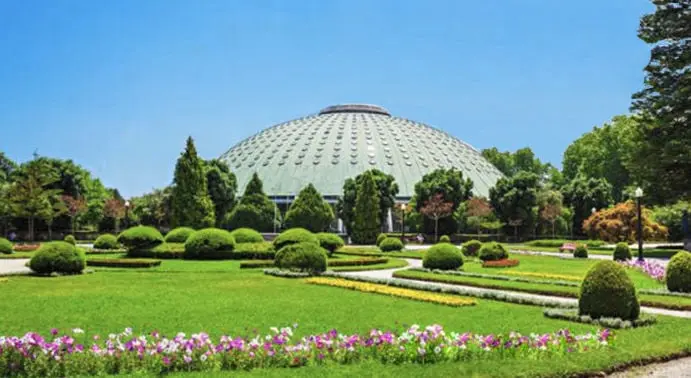
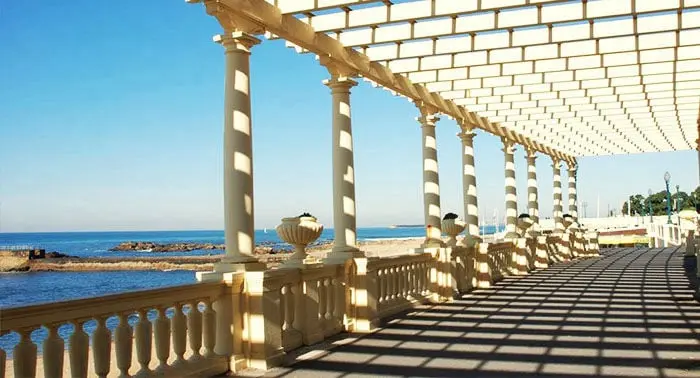
Audio guide devices, Multimedia audio guides,
Audio guide GPS tourist bus-train, charging bases and accessories.
Group guidance systems, headsets, charging cases, tour guide systems accessories.
Audioguides available from mobile devices, web App, downloadable App from Google Store.
Audioguides in several languages, translations, voiceovers. Audio descriptions, signoguides, visual contents for audioguides. 3D Reality.